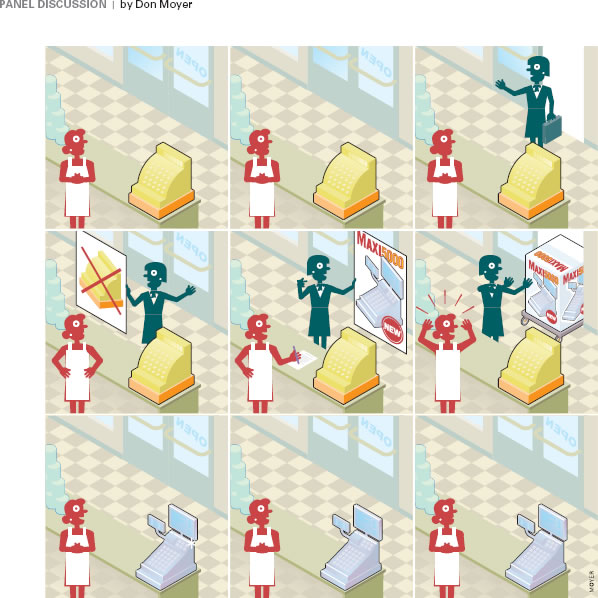It can be a challenge to communicate what the design thinking process is and the benefits to be gained from implementing or using it in an organization. So imagine an initiative to shift the entire culture of a large industrial corporation to a design thinking mentality. It sounds nearly impossible, right? Well that is exactly what Procter & Gamble accomplished over the last few years. An article in Business Week profiles how P&G “changed it’s game”. If you are comtemplating how design thinking could be used to transform the work and innovation processes in your library, read up on P&G’s Design Thinking Initiative.
Now it’s true that P&G applied some considerable resources to this Initiative. For example, they’ve conducted over 40 design thinking workshops using over 100 internal facilitators. They also brought in design thinking gurus like Roger Martin from the Rotman School of Management and David Kelley of IDEO and the founder of Stanford’s D.School to help them develop and prototype their workshops. But there are some things that P&G has learned and developed that could be of help to other less well-resourced organizations – like your library.
One goal of any transition to a design thinking organization is to teach leaders to use it to reframe their problems. Here is how the change in approach at P&G is described:
“The analytical process we typically use to do our work—understand the problem and alternatives; develop several ideas; and do a final external check with the customer—gets flipped. Instead, design thinking methods instruct: There’s an opportunity somewhere in this neighborhood; use a broader consumer context to inform the opportunity; brainstorm a large quantity of fresh ideas; and co-create and iterate using low-resolution prototypes with that consumer.”
As an example of this reframing, for one of their personal care product lines the emphasis changed from telling the consumer why the product was right for them to creating a web-based interactive consultation that engages the consumer through a series of questions that allows consumers to identify, on their own, which P&G product is the right one for their specific needs. It is based on an empathic design process. Through the use of design thinking P&G employees are encouraged to work in groups to brainstorm new ideas and they are using much more rapid prototyping of products to learn what works and what doesn’t. Another key to the transformation process is that it must involve the entire organization which is why P&G is approached this as an immersion process. It seems like an enormous effort, and I don’t doubt it is. But this quote provides some insight into the benefits the company is gaining from its Design Thinking Initiative:
“Design thinking activates both sides of the brain—it makes participants more creative, more empathetic toward the human condition P&G consumers face. Our managers don’t leave their analytical minds at home; instead they are able to operate with their whole brain, not just the left hemisphere.”
What library couldn’t benefit from a more creative workforce? Though the article doesn’t come right out and say it I see a company that is going through a transformation that allows it, through the design thinking of its workers, to ultimately give their customers a better user experience with their products. To me that sounds like the effort required to shift to a design thinking culture is well worth the effort.
